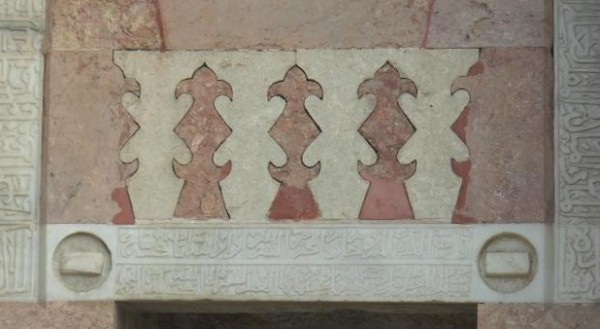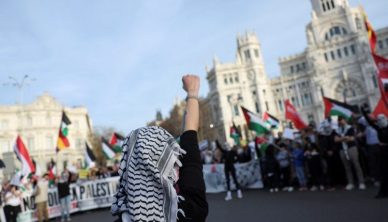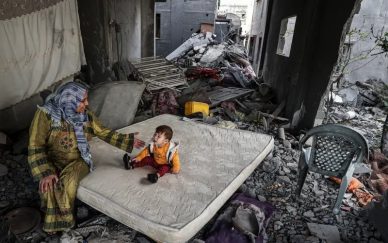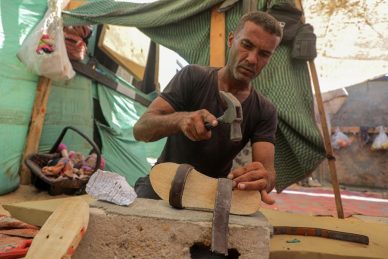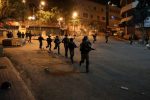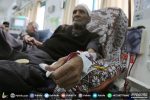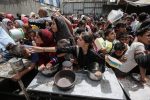Until today the historic city of Al-Khalil is rich and has landmarks that date back to many historical eras including the Canaanites the Anakis the Byzantines the Romans the Crusaders and the Mamluks.
Historic milestone
On the outskirts of the old and historic Sheikh Neighborhood west of the Ibrahimi Mosque a tall dome of a Mamluk mosque that is more than eight centuries old stands and remains defiant despite the spread of the Jewish settlers’ houses in the heart of the city. The eight minarets architectural style is almost unique to Palestine. It is the minaret of Sheikh Ali Al-Bakka Mosque who was a Sufi preacher and Caucasian hero who came to fight in Palestine and still has his tomb inside the mosque’s corridors.
Role of the Mamluks
Historian Dr. Adnan Abu Tabbana who specializes in the history of Al-Khalil noted that this mosque was founded in 670 AH. It was built in the era of Al-Zaher Baybars. It was built by Izz al-Din Ayman al-‘Alai. He was administratively responsible for Palestine and the Levant. Ali Al-Bakka fought with Baybars in Palestine.
Scholars in the battle
Abu Tabbana revealed in an exclusive interview with the PIC that Sheikh Al-Bakaa lived for 100 years and witnessed the Ayyubid and Mamluk eras. He was a fierce fighter and defender of Palestine. He was one of the heroes of the Battle of Arsuf. At the end of his life and as he became old he devoted his life to worship. He was a great believer and in the dry days people used to count on his prayers to have rain. He was called Al-Bakka which in Arabic means the weeping due to the intensity of his weeping during prayer as well as for crying over a friend who took part in many wars he fought who was a Christian Arab.
Urban development
During the Mamluk era however the place witnessed a remarkable urban development according to Abu Tabbaneh. A mosque was built with a distinctive minaret during the reign of the Mamluk prince (Husam al-Din Tarantai) the son of King Al-Mansur ibn Qalawun.
During the British mandate the Mosque turned into a base of resistance as described by the researcher and historian of Palestine Studies Professor Taysir Jabbara who wrote several studies on the topic.
The Mosque and resistance
Jabbara told the PIC: “The Sheikh Neighborhood was packed with fighters and its mosque was a headquarters for them. One of the people involved in the resistance against the British Mandate of Palestine was a young man named Abdel Halim from the family of Nashat next to the Sheikh Ali Al-Bakaa Mosque who was locally known as Al-Shilf. The men and youth used to gather and contact the smugglers to bring in weapons from the east of Jordan to fight the British. When the arms would reach the Jordan River through the Yatta and Bani Naim Al-Shilf would store it at the Sheikh Ali Mosque for several nights and then take the weapons on donkeys and horses to the Revolution headquarters west of Hebron between a series of mountains called the Milh area.
“The Sheikh Ali Al-Bakka Mosque played an important role during the 1936 Revolution and during the Palestinian uprisings and the Mosque’s proximity to the historic neighborhoods of Al-Sheikh its alleys and its arcades made it play this important role. It was a safe haven for storing weapons in the dark alleys and houses like Abu Alsirhid alley which required a great lighting during the day. All of this supported the revolution and the revolutionaries who took the Mosque as their meeting point” noted Jabbara.
Islamic Complex
The development of the Mosque made it become a large Islamic complex embracing a lot of centers and committees. Researcher Mohammed Dhiab Abu Saleh a senior official at the Department of Wqaf in Hebron said: “Sheikh Ali Al-Bakka Mosque has been characterized by its ancient history and distinctive role enabling it to become a center of focus and a focal point to serve the Palestinian citizens.”
Abu Saleh told the PIC reporter: “The Sheikh Ali Al-Bakka Mosque includes today a large center for the memorization and teaching of the Koran where about 3000 students receive their Koranic sciences. It also serves as the headquarters of the Zakat and Sadaqat Committee which cares for hundreds of poor families in addition to housing a clinic and public lectures hall.”

